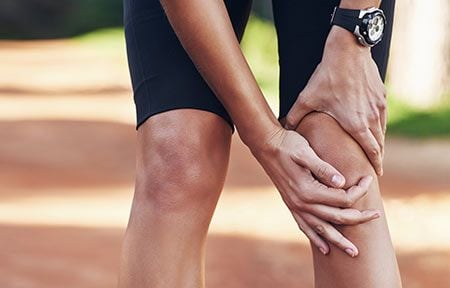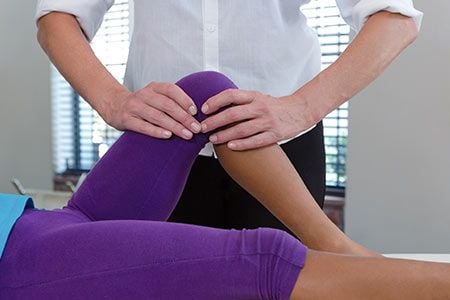
Knee pain is common among all ages of people. Swelling and stiffness in the knee can feel excruciating. There may even be crunching or popping in the knee with inflammation, and straightening it could be a challenge. A person with knee pain is also likely to feel weak or unstable in the knees. There are a variety of reasons a person may experience knee pain. According to the CDC (Centers for Disease Control and Prevention), 15 million people in the U.S. experience joint pain associated with arthritis each year, and the knees are some very important joints in the body that are not immune to such conditions. The good news is that chiropractors are trained to treat joint pain and many of the conditions that contribute to it.
Common Causes of Knee Pain
While there are different possible causes of knee pain, the most common include injuries (torn ligaments and cartilage damage), arthritis and other medical conditions. In addition, an injury to the knee could affect the tendons or bursae (fluid-filled sacs that cushion the outside of the knee joint). It may also impact the bones, cartilage and ligaments that form the actual joint.
Common knee injuries include fractures to the bones in the knees, an ACL (anterior cruciate ligament) tear or a torn meniscus (the rubbery, tough cartilage that acts as a shock absorber between the thigh and shinbones). There may also be inflammation in the knee bursae (bursitis) or the tendons that attach to the kneecap (patellar tendonitis). Common forms of arthritis that can affect the knee include osteoarthritis, rheumatoid arthritis, gout, pseudogout (“false gout”) and septic arthritis (an infection of the joint).
Among medical conditions that cause knee pain are patellofemoral pain syndrome (pain and stiffness in the front of the knee and around the kneecap), a loose bone or cartilage floating in the joint space due to degeneration, iliotibial band syndrome (an overuse injury that affects the outer part of thigh and knee), a dislocated kneecap, and hip or foot pain that causes extra pressure to be placed on the knees.
Risk factors for developing knee pain include obesity, weak or inflexible muscles, involvement in certain sports or occupations that place repetitive pressure or stress on the knee, and a history of previous injuries.
Non-Invasive Treatment Options for Knee Pain

When it comes to alleviating knee pain, the treatment options will vary from one person to the next based upon the cause of the pain and the symptoms associated with it. Chiropractors are able to treat a variety of conditions related to knee pain at the root of the problem while alleviating pain in the knee. Common methods of treatment include strength training and stretching exercises, healthy weight management and nutrition, soft tissue manipulation, instrument adjustments, massage, posture correction, spinal adjustments, trigger-point therapy, low-level laser therapy and ultrasound therapy.
Why Seek Chiropractic Care for Knee Pain?
Chiropractors are trained in safe and noninvasive treatment methods that help alleviate pain for different joint conditions, including those pertaining to the knees. Knee pain can make life difficult to manage, but it doesn't have to hold you back any longer. If you are suffering from knee pain, chiropractors can examine your knee and may use imaging to help determine the cause of pain. When the problem has been pinpointed, we will discuss your treatment options with you and work with you to create a treatment plan.
Don't let knee pain slow you down—schedule an appointment and get started on the path toward healing and recovery today.
